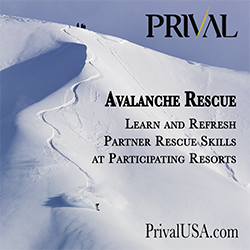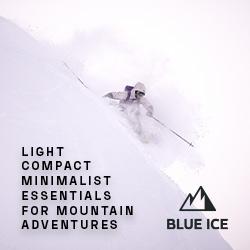Forecast for the Salt Lake Area Mountains

Saturday morning, February 2, 2013
The avalanche danger is an overall MODERATE, with areas of CONSIDERABLE on steep, wind drifted slopes, especially those facing north through east. Human-triggered avalanches are possible, with large avalanches possible in isolated areas.
The danger of wet loose slides will rise to MODERATE with day time heating on all steep sunny slopes and the low to mid elevation shady slopes. Avoid travel on and below these slopes, in the run out zones, as the day and snow heats up.
 Weather and Snow
Weather and Snow
There are bluebird skies this morning, with the very light westerly winds. Most stations are averaging less than 10 mph, with even the highest peaks only gusting in the 20s. Temperatures are in the teens to low 20s. The end of storm dense graupel created a good, supportable turning and riding out of the wind affected terrain. The south to westerly facing slopes received enough sun yesterday that they may be slightly crusted.
 Recent Avalanches
Recent Avalanches
Two snowmobile triggered slides yesterday – one in Dry Fork, American Fork, (east facing, 10,200’), the other a full burial, with a successful beacon recovery, in the Monte Cristo area, Ogden area mountains, triggered from below in a creek bed or ravine like terrain feature. It was a heavily wind drifted, SE facing slope, 8500', about 300' wide, and failed on facets. Preliminary info here. Resorts on the Park City side and in Big Cottonwood were able to trigger slides with explosives 1 to 3 feet deep, up to 250’ wide that broke in old snow on northerly to east facing slopes.


New Snow
Description
It is really complicated out there – a low probability, high consequence day. In my mind I’m creating the “Good ‘Stability” “Poor Stability” list.
| Good Stability | Poor Stability |
|
Explosive testing in the backcountry with no results – in American Fork, Snake Creek, and low elevation Cascade, Mineral, Cardiff, Days. Widespread travel in steep backcountry terrain with no avalanches triggered on most slopes. No recent naturals, many naturals during the storm were new snow only. Time since last loading event. |
2 snowmobile triggered slides, one on facets, the other looks like new snow and/or graupel pooling. Full burial in a terrain trap. Explosive released slides, Park City and Big Cottonwood resorts, into old snow Collapsing and cracking Poor snow pit stability tests |
A steep slope with wind drifted snow over weak facets seems to be the pattern for triggering a slide. Human triggered avalanches are possible today, with large avalanches possible in isolated places. Slopes with a shallower snow pack before the last storm have the better developed facets, and are the more likely terrain to trigger a slide. Collapsing is an indication of an unstable snowpack, and you need to stay off of and out from under steep slopes. The other slopes that are more heavily loaded include places where the graupel rolled down and pooled – below cliff bands and where steep slopes flatten out.
Evaluate the snow and terrain carefully – safe travel protocol is imperative if you are traveling on steep slopes - one at a time, with the rest of your party out of the way and watching, and think about the consequences if you are wrong – will you be carried into trees, off a cliff or buried deeply in a gully. There is almost always a less dangerous, more conservative choice that can be taken.
Wet Snow
Description
Without the cooling winds, today’s sun and warmer temperatures will heat the snow on the steep sunny slopes facing east through south through west. As the snow become damp, it will become increasingly easy to trigger wet loose sluffs in steep terrain, particularly near cliff bands. In addition, periods of high thin clouds could heat the snow on the low and mid elevation shady slopes, too. Wet loose sluffs are easier to predict, but debris serious.
Additional Information
High pressure will bring mostly clear skies and a gradual warming trend to northern Utah for the next few days. The westerly winds will be light, averaging less than 15 mph along most ridges, with gusts across the high peaks occasionally in the 20s. 8,000’ highs will be in the mid to upper 30s, 10,000’ highs in the upper 20s. Next chance for snow looks to be in about a week.
General Announcements
Go to http://www.backcountry.com/utah-avalanche-center to get tickets from our partners at Park City, Beaver Mountain, Canyons, Sundance, and Wolf Mountain. All proceeds benefit the Utah Avalanche Center.
If you trigger an avalanche in the backcountry - especially if you are adjacent to a ski area – please call the following teams to alert them to the slide and whether anyone is missing or not. Rescue teams can be exposed to significant hazard when responding to avalanches, and do not want to do so when unneeded. Thanks.
Salt Lake and Park City – Alta Central (801-742-2033), Canyons Resort Dispatch (435-615-3322)
Ogden – Snowbasin Patrol Dispatch (801-620-1017)
Powder Mountain Ski Patrol Dispatch (801-745-3773 ex 123)
Provo – Sundance Patrol Dispatch (801-223-4150)
Dawn Patrol Forecast Hotline, updated by 05:30: 888-999-4019 option 8.
Twitter Updates for your mobile phone - DETAILS
Daily observations are frequently posted by 10 pm each evening.
Subscribe to the daily avalanche advisory e-mail click HERE.
UDOT canyon closures UDOT at (801) 975-4838
Wasatch Powderbird Guides does daily updates about where they'll be operating on this blog http://powderbird.blogspot.com/ .
Remember your information can save lives. If you see anything we should know about, please participate in the creation of our own community avalanche advisory by submitting snow and avalanche conditions. You can also call us at 801-524-5304 or 800-662-4140, or email by clicking HERE
Donate to your favorite non-profit –The Friends of the Utah Avalanche Center. The UAC depends on contributions from users like you to support our work.
For a print version of this advisory click HERE.
This advisory is produced by the U.S. Forest Service, which is solely responsible for its content. It describes only general avalanche conditions and local variations always exist. Specific terrain and route finding decisions should always be based on skills learned in a field-based avalanche class.




